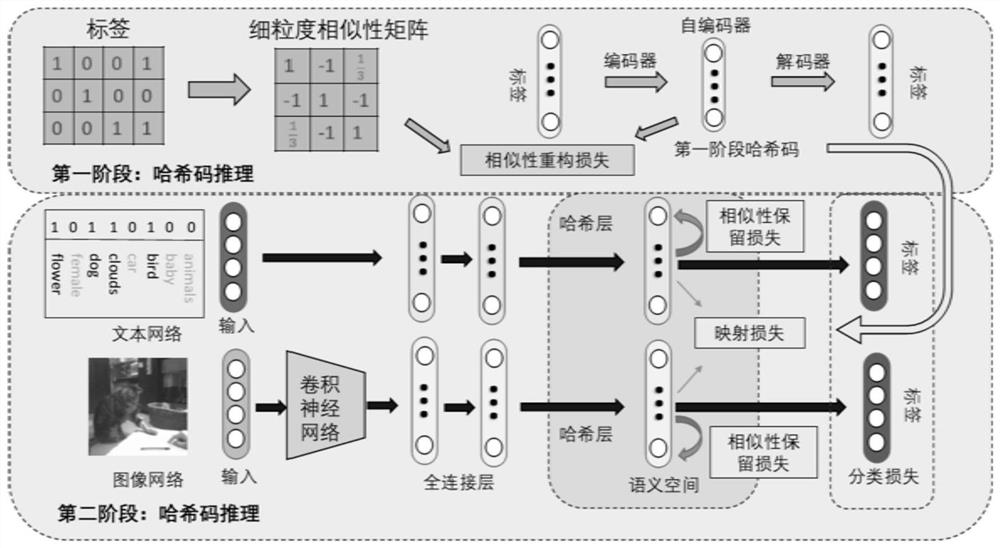Cross-modal hash retrieval algorithm based on fine-grained similarity matrix
A similarity matrix and hash algorithm technology, applied in the field of cross-modal retrieval, can solve the problem that the cross-modal hash algorithm cannot mine the similarity information of data items
- Summary
- Abstract
- Description
- Claims
- Application Information
AI Technical Summary
Problems solved by technology
Method used
Image
Examples
Embodiment Construction
[0060] It can be known from the background technology that there are two main defects in the existing cross-modal hash algorithm based on two stages. First, the current two-stage hashing algorithm uses a coarse-grained similarity matrix, which cannot mine the rich similarity information of data items in the original space. Second, most two-stage hash algorithms use multi-classification methods to train hash codes, and may not get the best hash function. Therefore, for the above two problems, this embodiment uses a similarity matrix defined in a fine-grained manner, and redesigns a hash function training method to solve the above two problems.
[0061] In this embodiment, in the second stage of hash function learning, for the image modality, the CNN-F network pre-trained on ImageNet is used. Keep the first five convolutional layers convl~conv5 and the next two fully connected layers fc6~fc7 unchanged, replace the eighth fully connected layer with a new fully connected layer co...
PUM
 Login to View More
Login to View More Abstract
Description
Claims
Application Information
 Login to View More
Login to View More - R&D
- Intellectual Property
- Life Sciences
- Materials
- Tech Scout
- Unparalleled Data Quality
- Higher Quality Content
- 60% Fewer Hallucinations
Browse by: Latest US Patents, China's latest patents, Technical Efficacy Thesaurus, Application Domain, Technology Topic, Popular Technical Reports.
© 2025 PatSnap. All rights reserved.Legal|Privacy policy|Modern Slavery Act Transparency Statement|Sitemap|About US| Contact US: help@patsnap.com



